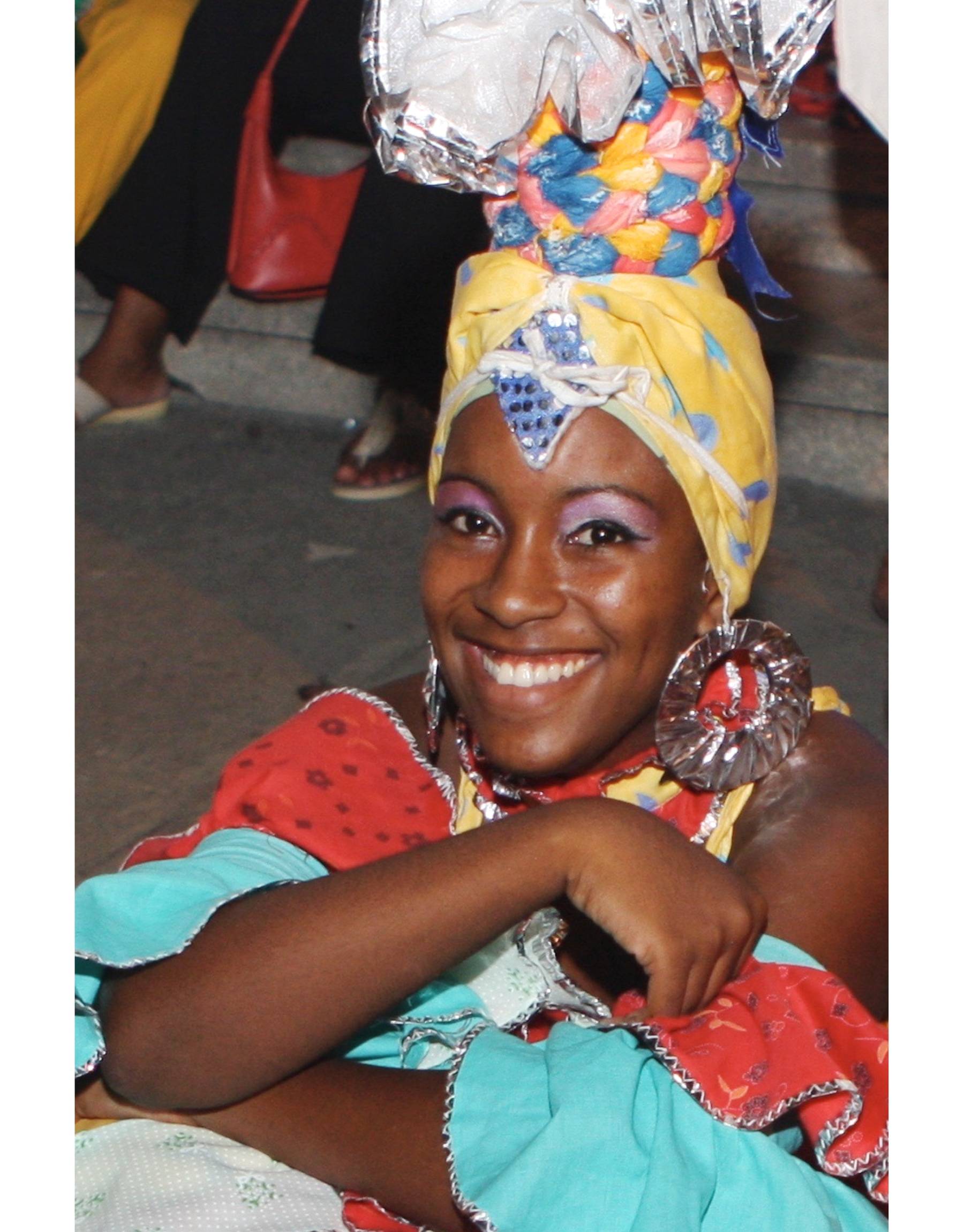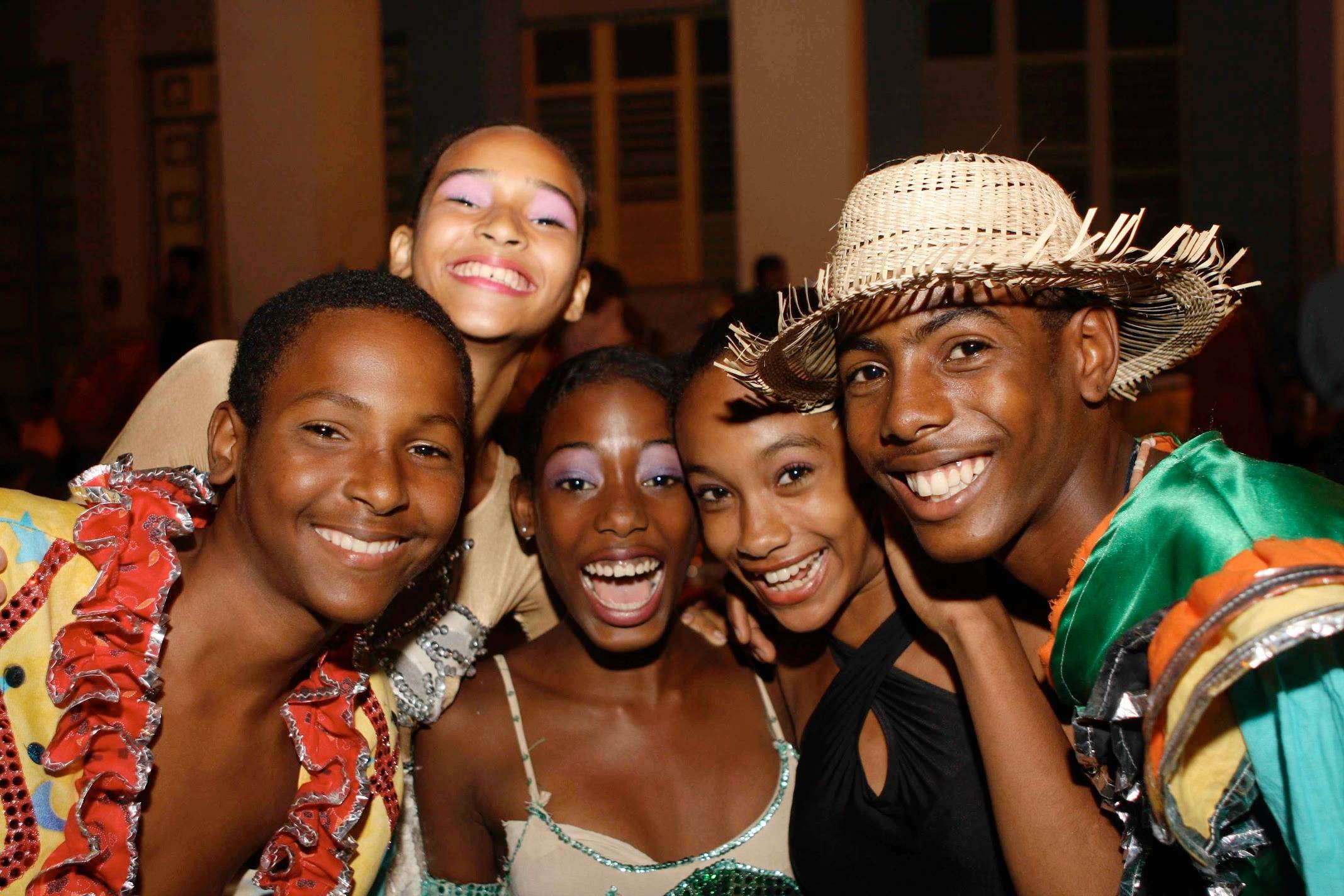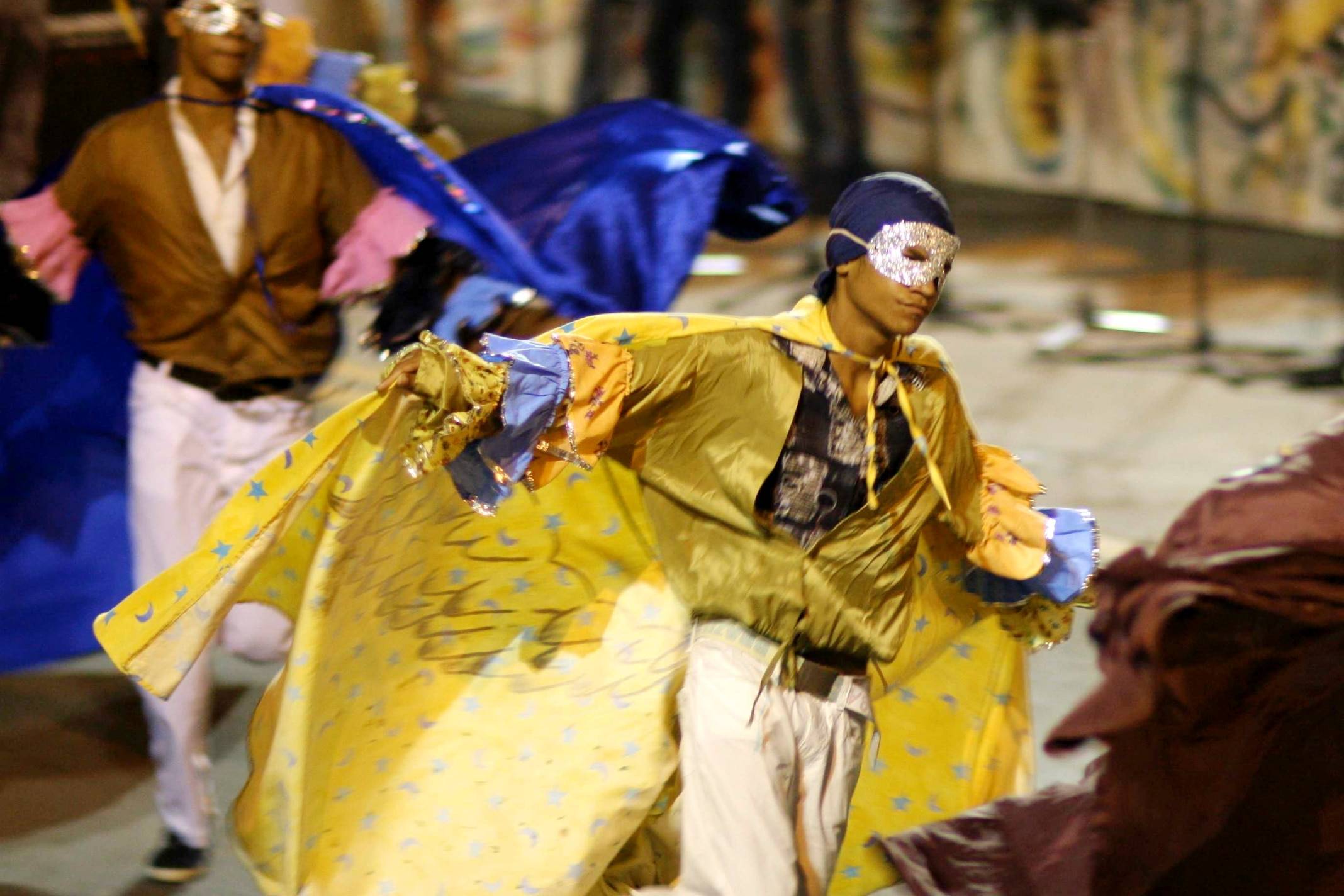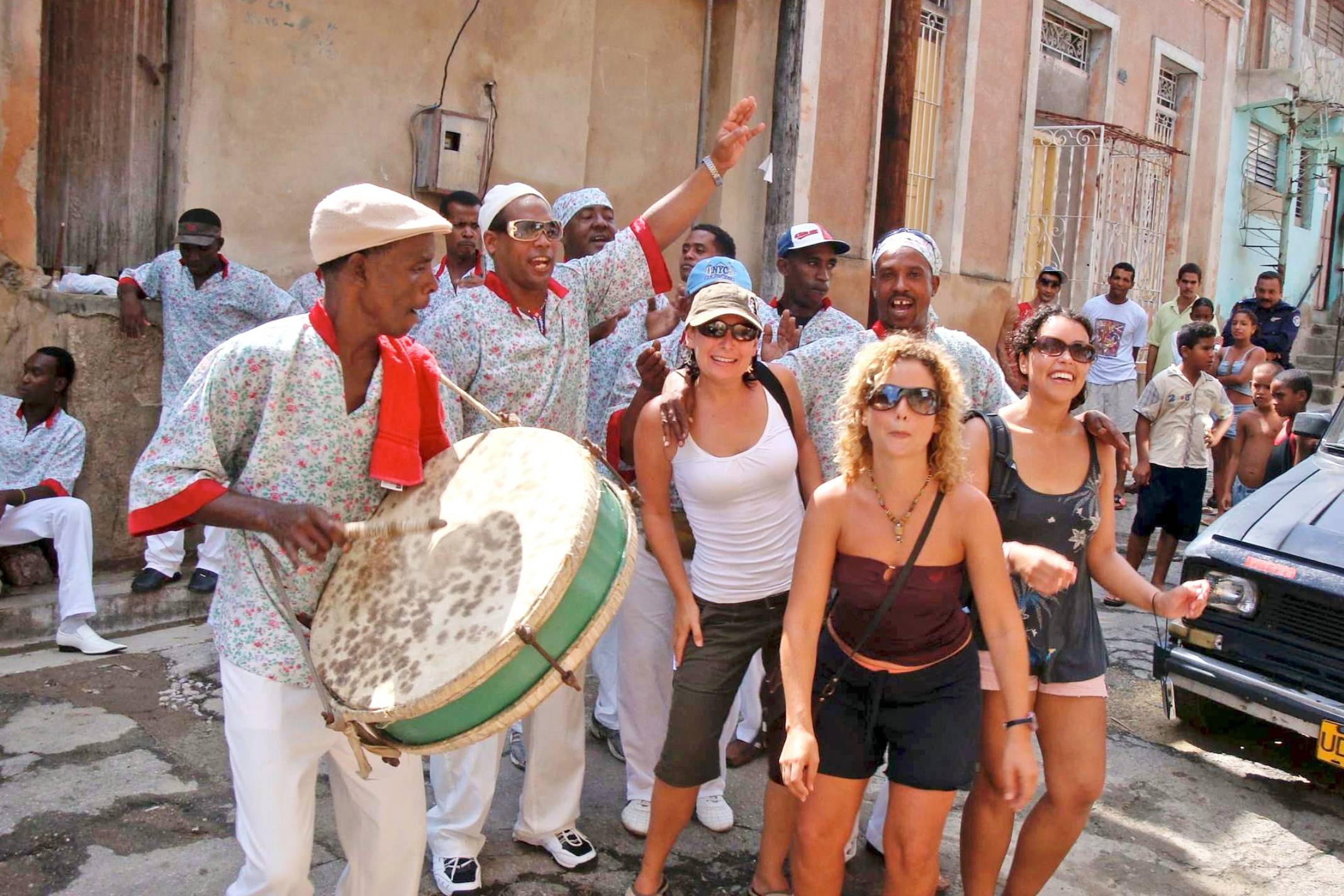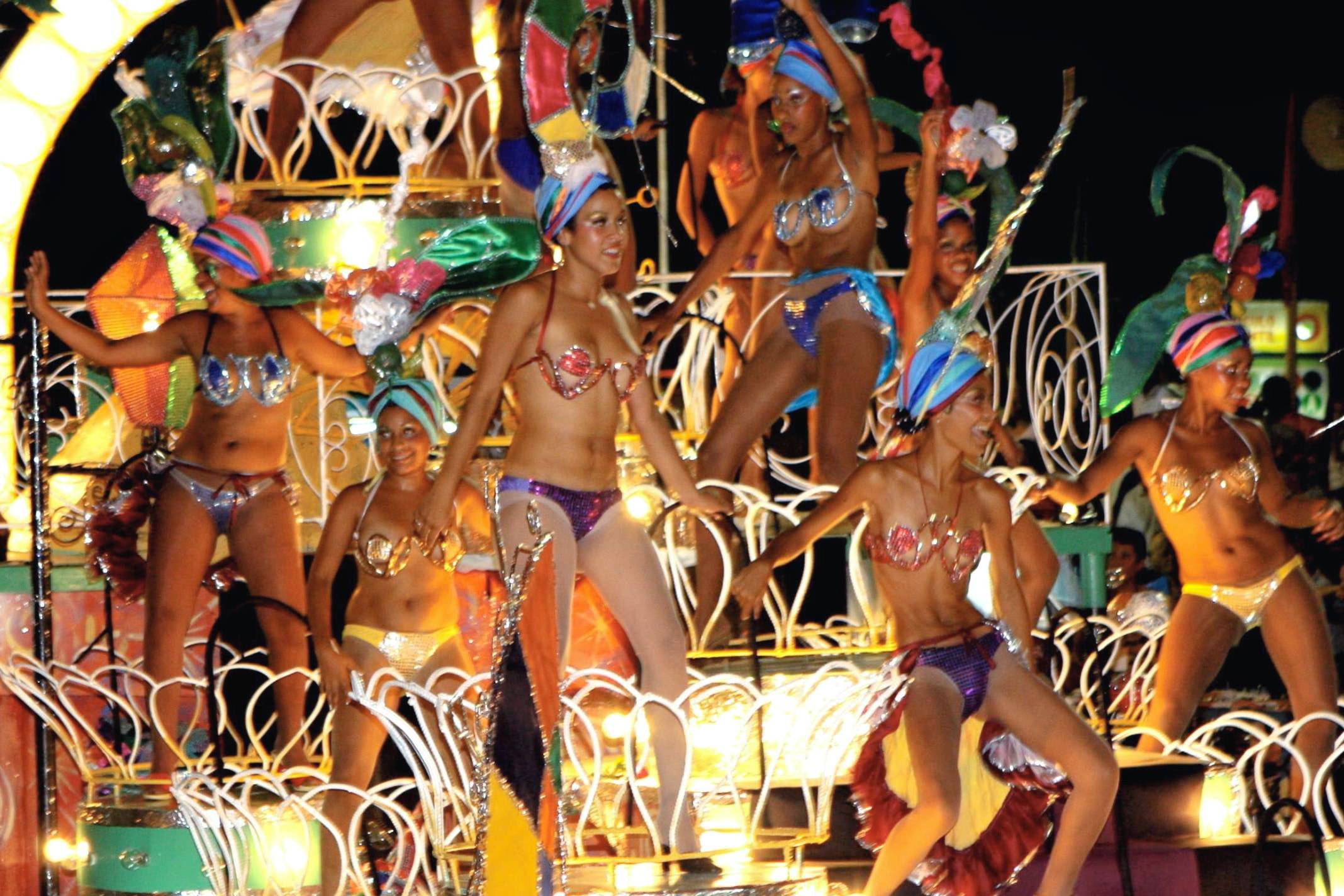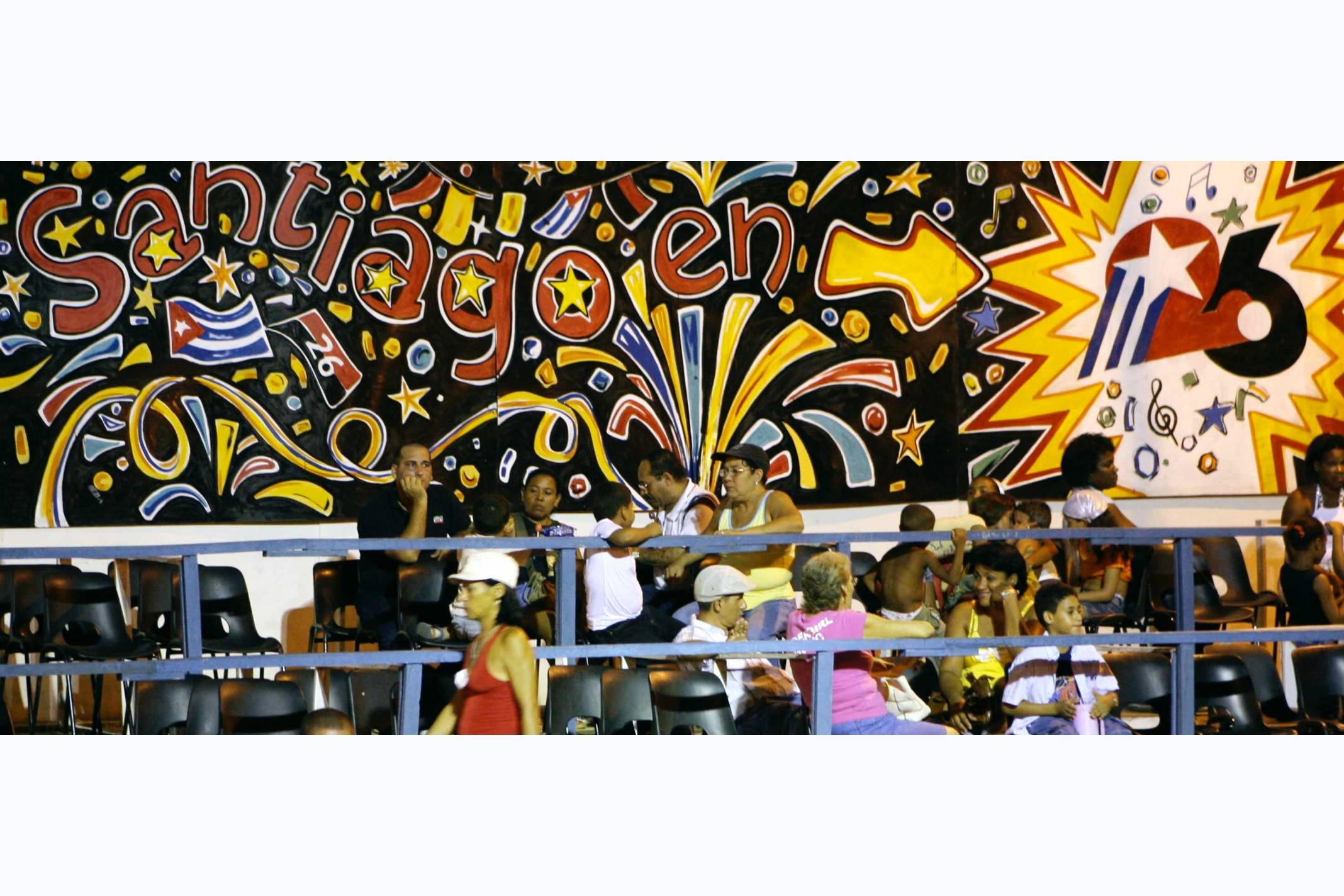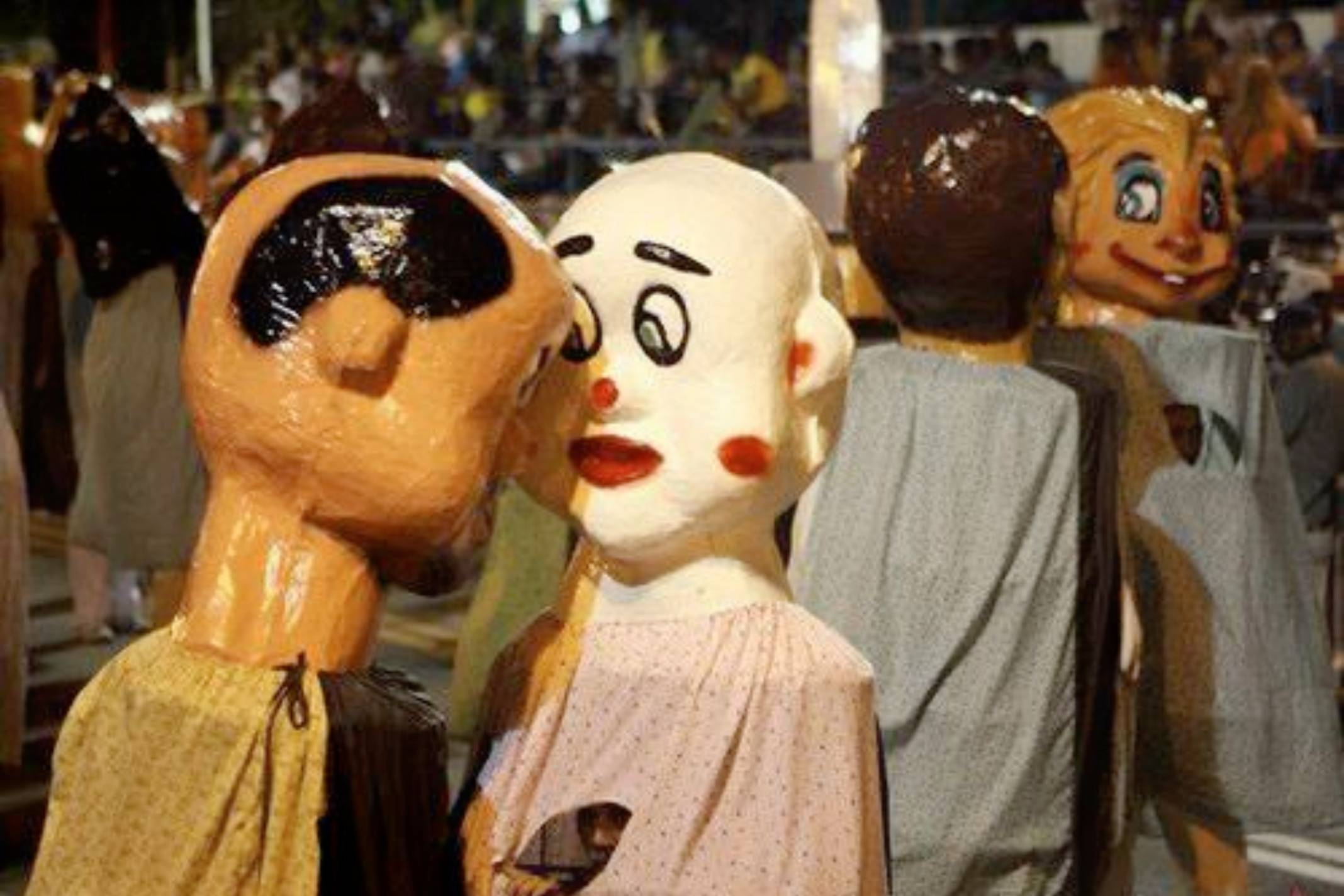Carnival in Santiago de Cuba
When the carnival begins in Santiago de Cuba, the whole city turns into one big party!
The carnival of Santiago de Cuba is the largest, most famous, and most traditional carnival in all of Cuba, and is an explosion of colour, contagious drum rhythms, and dance. It is also a time for Cubans to re-gather themselves and remember their history, community, and culture, and is often punctuated by the Cuban national holiday of July 26th.
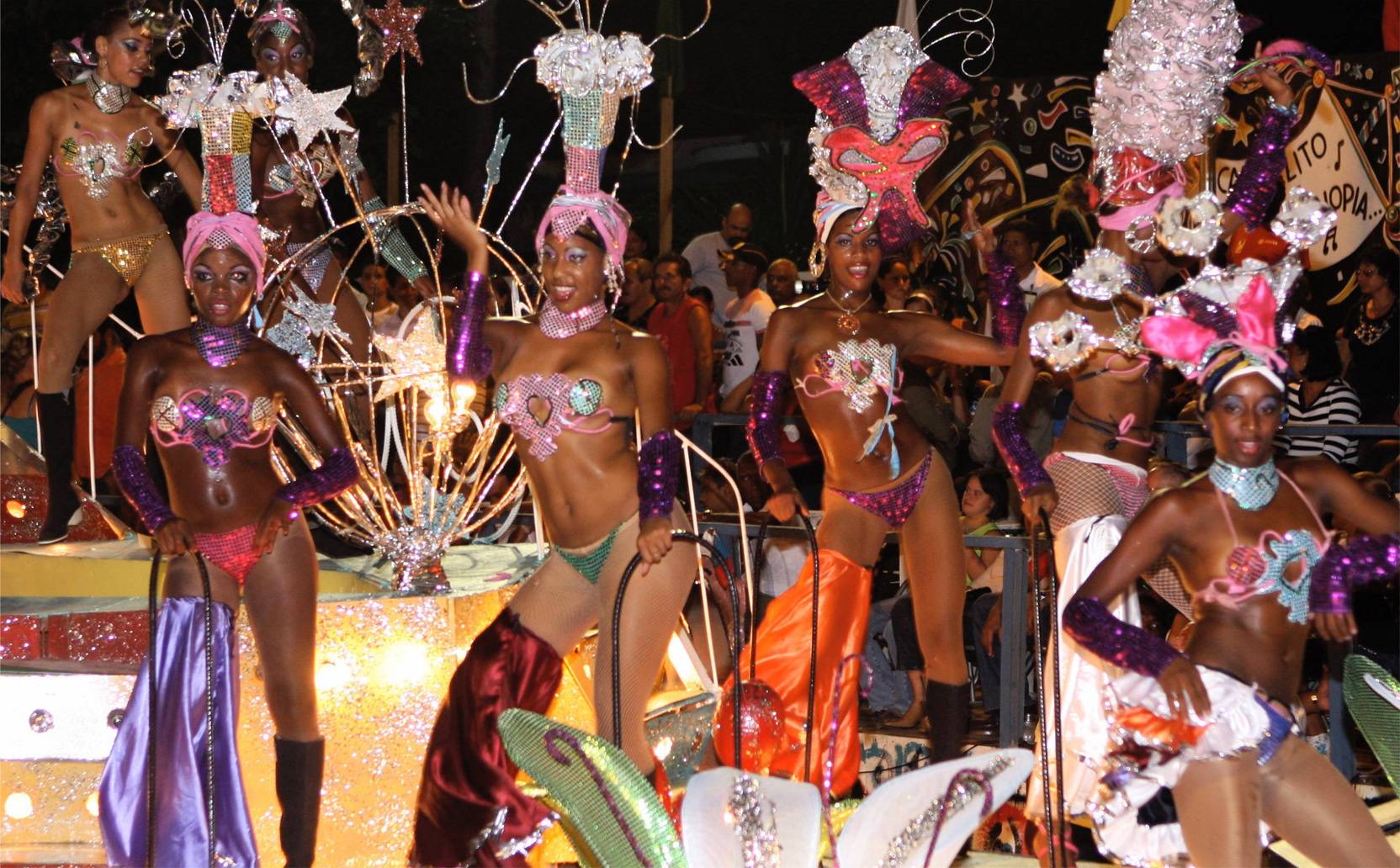
See this Festival!
- We include the Santiago Carnival each year in one of our 15 Day Original tour departures and/or a Cuba Heritage tour departure. Included is a seat in the stands on one night of the main parade of the carnival, accompanied by a local tour guide. Or you can book a Santiago short stay package and request Carnival as an option activity.
Background
The second biggest city after Havana, Santiago is the most exotic city of Cuba with lots of different ethnic groups having settled here over the centuries, including African, Chinese, Indigenous, French Haitian, and Spanish.
The mixture of these cultures is shown in the richness of the music and dance, many forms of which originated in Santiago de Cuba, such as the Conga, Rumba, and Son (which later developed into what people call salsa today).
What most characterizes the carnival are the congas, which can be heard in many different areas around the city. Also popular orchestras make their way to Santiago for the festivities. For the city's inhabitants, as long as there is music to dance to, and plenty of beer, the carnival is a success.
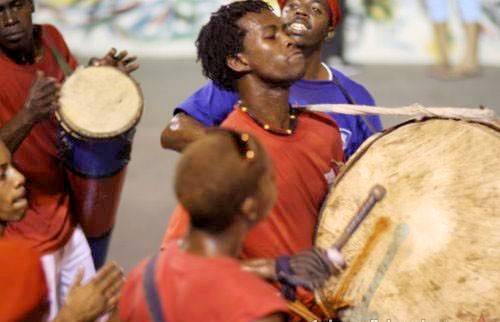
History of the Carnival
In most Roman Catholic societies, Carnival is a festival held immediately before Lent, and celebrated in February or March.
However the Carnaval of Santiago de Cuba is held typically towards the end of July. It's known to have evolved from the summer festivals formerly referred to as the Mamarrachos. These Mamarrachos were held on June 24 (St. John’s Day), June 29 (St. Peter’s Day), July 24 (St. Christine’s Day), July 25 (St. James the Apostle’s Day) and July 26 (St. Anne’s Day).
In most cases, the way in which the Mamarrachos were celebrated actually had very little to do with the religion which gave the individual days their names. The locals used these dates of public holiday to celebrate in their own way, and the names of saints were maintained simply for convenience or perhaps to make it easier for the colonial government to continue to allow the style of celebration that was carried out.
Perhaps only in the case of St. James Day, is there any possible link to a religious meaning in the celebrations, as this Saint was adopted as the the patron saint of Santiago de Cuba, and the dates of the modern Carnival (towards the end of July) nearly always coincide with Saint James Day on July 25.
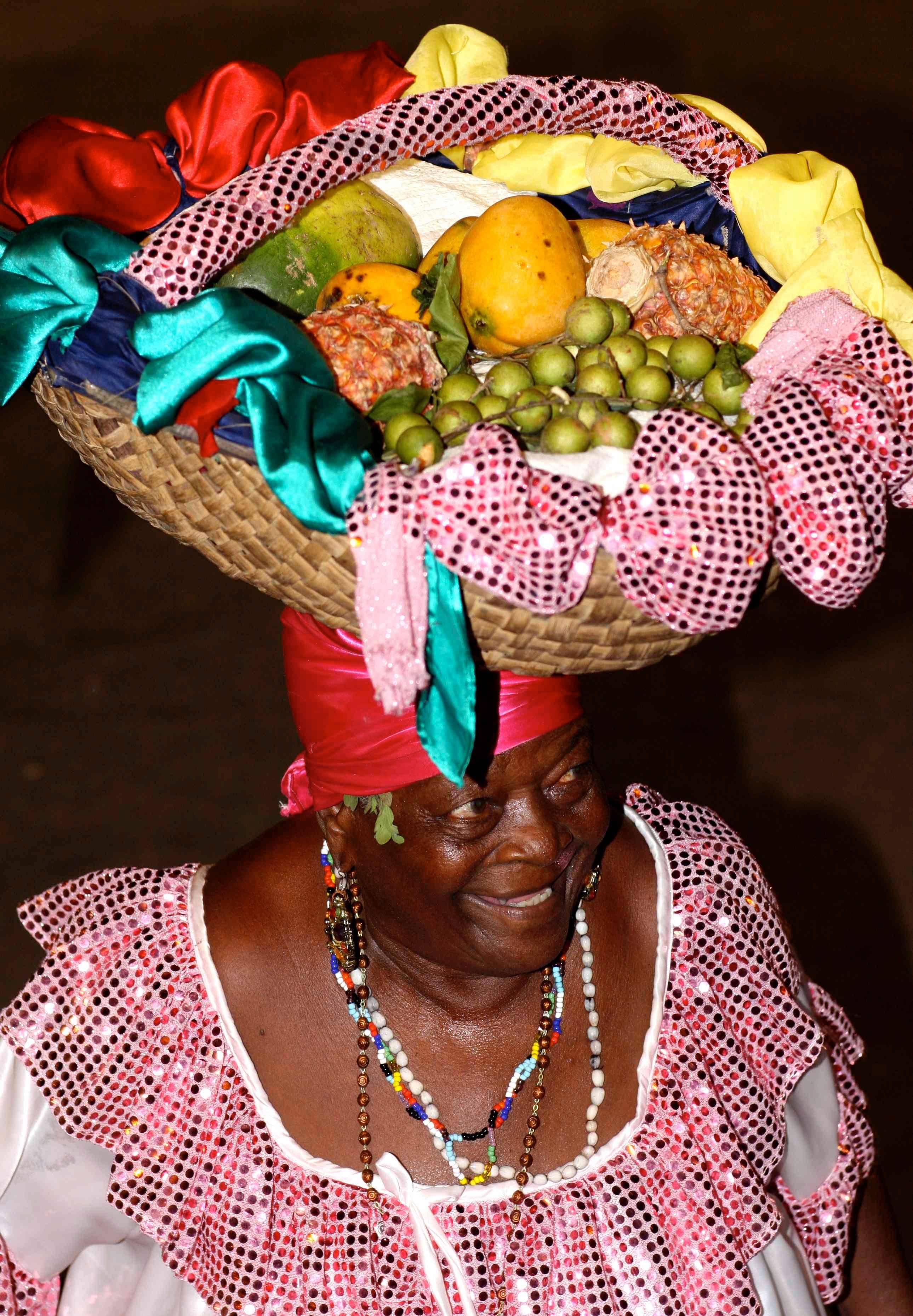
The exact age and origins of the Mamarrachos are unknown. The word “mamarrachos” itself does not appear in written records until 1757. The festivals themselves are known to have occurred as early as 1679.
It is recognized, however, that the Mamarrachos of the 1800's were even more intense and elaborate celebrations than they are today. They included throwing objects and liquids at other participants (as well as others not participating!), traditional foods -such as ajiaco, empanadas, omelets, fritters, fruits, fried or roast pork with boiled plantains, horse racing, performances by theatre groups, paseo (a parade of animal-drawn carriages), bonfires, carrying torches on pilgrimages to sanctuaries, consumption of the alcohol such as aguardiente and “Yara” rum, beer, the wearing of costumes and masks, masked balls (with live music and dancing in the styles of contradanza, danza, danzon, rigadoon and waltz), verse singing in the styles known as cantos de pullas, which were songs, that mock and insult others, the spontaneous parading of the comparsas, and the montompolo - which was a massive parade on the last day, that gathered together all the participating comparsas in one big rollicking performance to mark the end of the festivities for that year.
By the end of the 1800's, the bonfires, torch bearing pilgrimages, and horse-racing had pretty much died out.
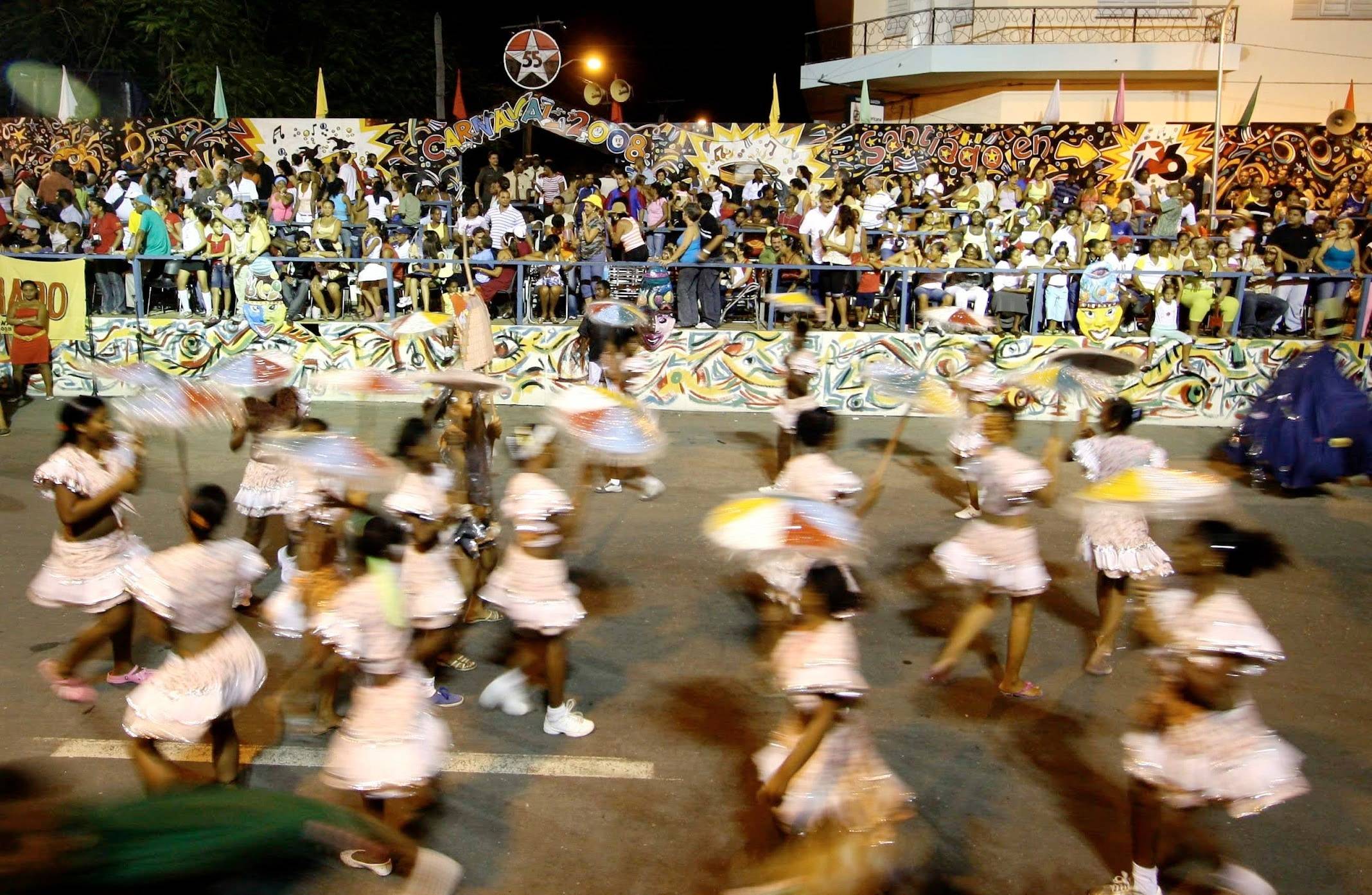
Comparsas
One of the most critical elements of the Santiago Carnival are the comparsas. These are street performances or parades which are comprised of a muscial group and associated troop of costumed dancers. There are generally tow categories: paseos and congas.
- Conga comparsas were composed mainly of lower class citizens; with the band being mostly percussion instruments. These were larger conglomerations of dancers compared to the paseos.
- Paseos tended to be more lavish and required more capital, and had more of a modern European style orchestra.
What the participants of the Conga comparsas lacked in material goods, they had to make up for in inventiveness, so it was through the conga that the unique characteristics of the music and dance of the Carnaval of Santiago de Cuba evolved.
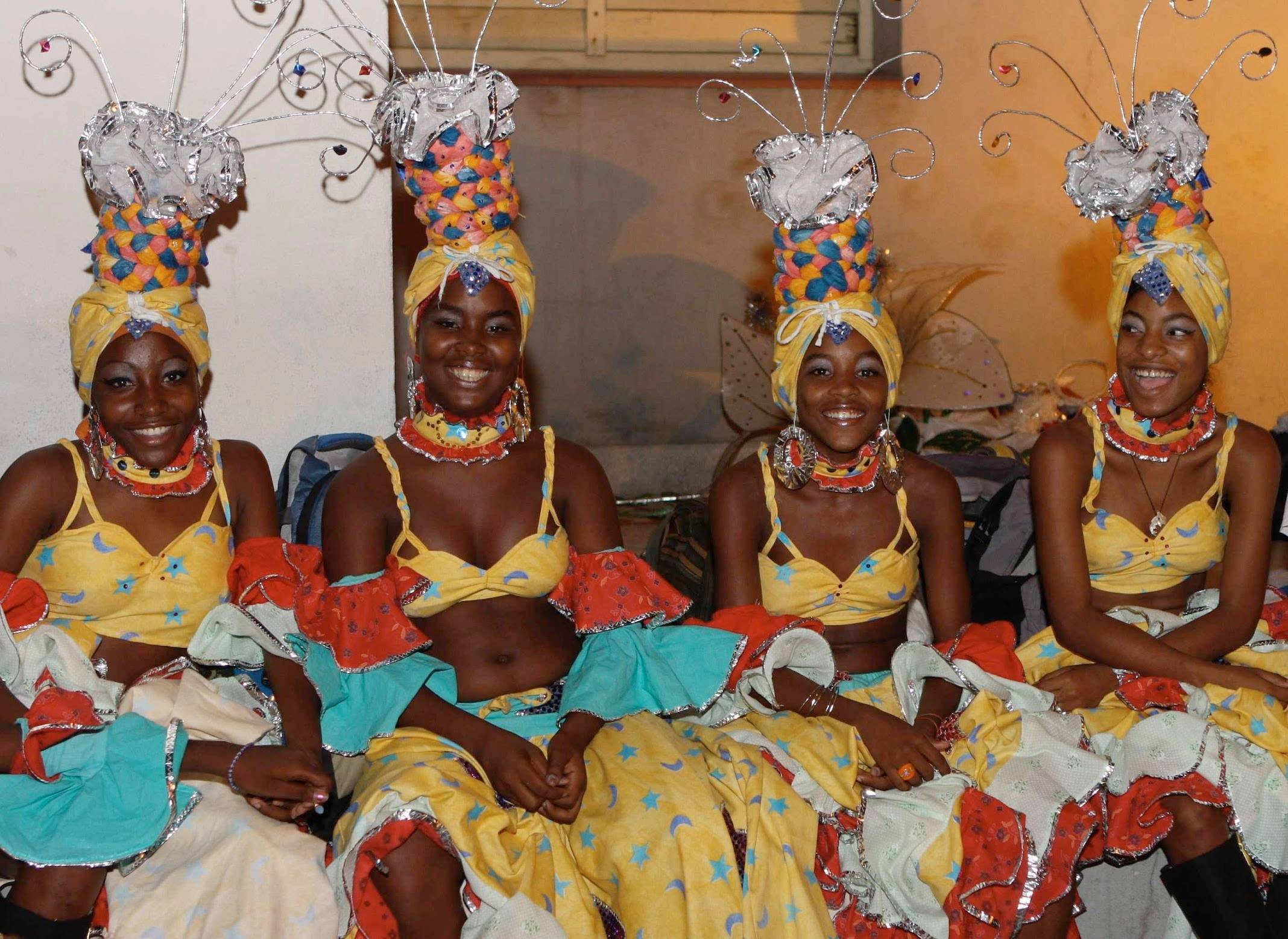
Ever since the beginning, there has always been criticism of the carnival within Santiago, from more conservative elements of society. They object to the noise, abuse of alcohol, and general disorder. However, as with other similar traditional festivals in Cuba such as the Charangas de Bejucal, the authorities have always decided to let such celebrations take place, since they act as a releasing of tensions for the slaves (during the time of slavery) and the lower classes. In effect they provide the people a form of entertainment, distraction, and a sense of freedom, even if just for a few days, and this has tended to dampen the desires for uprising and revolt against the authorities.
